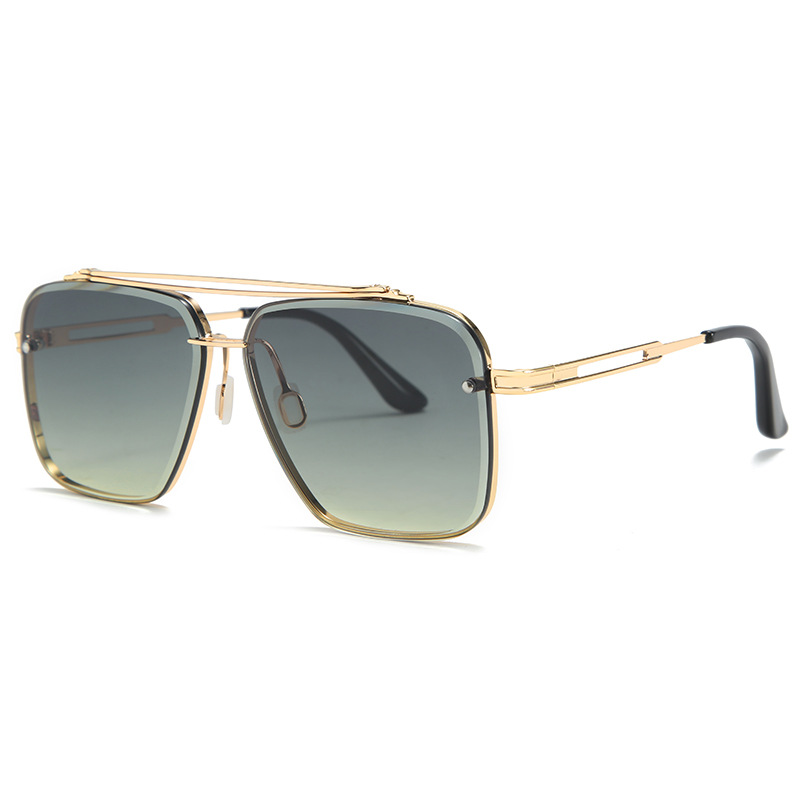
In today’s fashion-forward world, men’s sunglasses are more than protective accessories—they are key expressions of personal identity. With the fusion of aesthetics and function, the visual elements of men’s sunglasses have become a crucial competitive edge for manufacturers and brands. From minimalist silhouettes to bold statement pieces, visual design now plays a central role in driving consumer engagement, brand loyalty, and market trends. This article explores how men’s sunglasses use visual appeal to dominate the industry and cater to evolving male fashion preferences.
1. The Rise of Visual Storytelling in Men’s Sunglasses
Modern men’s sunglasses are designed to communicate a story—whether it’s one of rugged adventure, urban sophistication, or retro flair. Manufacturers and designers increasingly rely on strong visual elements to connect with target demographics. For example, sleek metallic frames with mirrored lenses often appeal to tech-savvy professionals, while classic aviators or wayfarers convey timeless masculinity.
Through lookbooks, digital campaigns, and social media, brands use high-resolution visuals to highlight not just the sunglasses but the lifestyle they represent. Visual storytelling through photography and styling has become a key part of how men perceive the value of a pair of sunglasses—even before trying them on.
2. Frame Shape and Face Structure Harmony
A major focus in men’s sunglasses design is how well the frame visually complements different face shapes. For square faces, rounded frames like teardrop aviators soften the angles, while angular styles like rectangular or square frames balance rounder faces. This interplay between geometry and facial structure makes visual design a functional necessity.
Brands now develop sunglasses with this harmony in mind, using visuals in promotional content to showcase different styles on diverse male models. This not only enhances product relatability but also helps online shoppers visualize how the frame will look on them, increasing purchase confidence.

3. Visual Trends in Lens Tints and Finishes
Lenses are no longer just about UV protection; their colors and finishes are visual statements in themselves. Mirrored lenses in hues of blue, red, or gold are popular among younger, style-conscious men, while gradient tints appeal to a more classic and refined taste. Polarized lenses also come in different colors that not only reduce glare but add to the overall visual impact.
Manufacturers have capitalized on this by offering a variety of lens options and clearly showcasing them in product visuals. Online shoppers are now drawn to close-up images and videos that display how lenses change under different lighting conditions—further reinforcing the sensory and stylish appeal of the product.
4. Materials and Surface Textures That Catch the Eye
Visual texture is another crucial element in men’s sunglasses design. Matte black frames exude a stealthy elegance, while glossy tortoiseshell patterns or brushed metal finishes suggest a vintage or industrial edge. These subtle visual details differentiate products even if they share the same shape.
Luxury sunglasses manufacturers often emphasize their use of materials such as carbon fiber, titanium, or natural acetate through high-definition product photography and 3D renderings. These visuals offer tactile clues that influence perception—men tend to associate visual texture with strength, durability, and value.
5. Brand Identity Through Iconic Visual Elements
eyewear brands leverage unique visual markers—logos, signature frame shapes, or lens engravings—to strengthen brand recognition. Whether it’s the subtle "T" on the temple of a Tom Ford frame or the bold, oversized Gucci stripes, these visual identifiers have become symbols of status and taste.
Such features are deliberately highlighted in marketing visuals and packaging design. For men, who are often less brand-diverse than women in accessories, these consistent visuals create brand familiarity and loyalty, often turning a good-looking pair of sunglasses into a fashion must-have.
6. The Influence of Celebrity Style and Visual Imitation
Men’s sunglasses frequently reflect celebrity and influencer trends. A single paparazzi shot of a movie star wearing a distinctive frame can send sales soaring. This phenomenon, known as “visual imitation,” is especially powerful in male fashion, where endorsement by a well-known figure validates a style’s masculinity and cool factor.
Manufacturers and retailers now incorporate celebrity-inspired visuals into their advertising strategies. Whether through lifestyle shoots or user-generated content on Instagram, the visibility of these products worn by aspirational figures fuels desirability among consumers.

Harmony Eyewear founded in 1998, a global leading sunglasses factory, mainly supplies sports sunglasses, fashion sunglasses, reading glasses, optical frames, safety goggles, safety face shields. We are professional Wholesale Glasses Frames Manufacturers.
Copyright © Harmony Eyewear Co., Ltd. Login
LoginBlock 3, Banyang Industrial Zone, Dafen, Duqiao Town, Linhai City, China.
Phone: +86-15868686818
E-mail: hw@meisuneyewear.com
